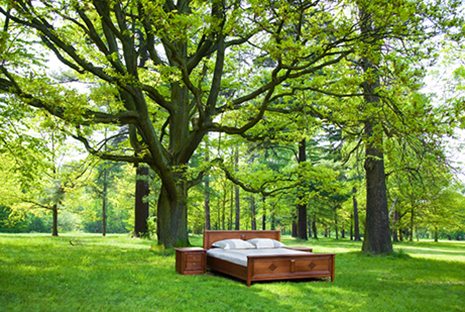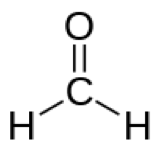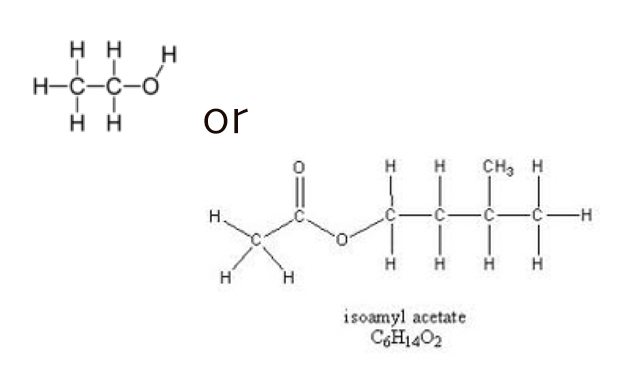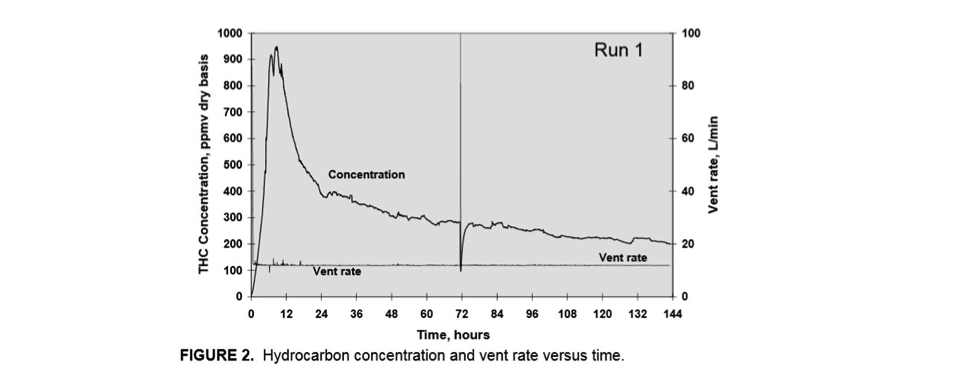Menu
***Take 20% off full price purchases*, use code summer24
***Take an extra 5% off products already on sale*, use code XTRA5
*Full details.
Plus, FREE shipping sitewide!
How to Find a Healthy, Non-Toxic, Low or Zero VOC Bed Frame for your Organic Bedroom
- posted by Brad
- | February 2, 2022
When looking for a natural bed frame the term “VOC” may come up. This stands for Volatile Organic Compound. The “organic” part of VOC is not the same as the “organic” that you’re looking for in your organic certification on your food or bedding. It is the chemistry designation of organic, meaning dealing with carbon containing chemicals. The “volatile” part of VOC means that it can enter the air where you get to breathe it in. In other words it can evaporate easily. This is often referred to as outgassing or off gassing when talking about indoor air quality. So for VOC’s we are interested in carbon containing chemicals that can work their way into the air. Let’s address some questions about VOC’s like where do they come from, how bad are they, what is the difference between low and zero VOC.
WHERE DO VOC’S COME FROM?
As far as bed frames there are two main sources that VOC’s can come from: the bed frame itself, and the finish used on the bed frame. For the bed frame the main question is what type of wood was used in the construction? Here the choices are a solid wood or engineered wood products, such as plywood and its relatives OSB, MDS, particle board, etc. Engineered wood products are made from wood scraps and glue, and the glue is going to contain a plethora of VOC’s that will offgas (come out of the product into the air). You might recall that there were several news stories that came out after Hurricane Katrina where the FEMA trailers were built with engineered wood products that were offgassing high levels of VOC’s causing medical problems for the residents of the trailers. The thing about VOC’s in engineered wood products is that the glue is present throughout the whole board and it can take a long time for the VOC’s to work their way out of the wood.
So if you are looking to reduce the level of VOC’s in your home you should look for solid wood bed frame construction. All of the natural bed frames that we offer are made from solid wood.
are looking to reduce the level of VOC’s in your home you should look for solid wood bed frame construction. All of the natural bed frames that we offer are made from solid wood.
WHAT ABOUT VOC’S IN THE WOOD FINISH?
This is a little more complicated as many wood finishes have a solvent that is used to apply the finish and that solvent is designed to dry. Since the VOC is measured for the finish as it comes in the can, VOC levels for some finishes can be high. It’s important to remember here that the VOC designation on wood finishes are primarily there to address environmental issues (such as smog reduction) and health issues for individuals who are applying the product. What that means is that a high VOC product can be applied to wood and then dry quickly leaving little VOC’s on the finished product. Think for example of a freshly painted room. The paint fumes can be quite strong and the amount of VOC’s in the paint used will definitely effect how strong the smell is. If that room is ventilated and dried out then the smell will eventually go away. This is where the problem with VOC finishes comes in. You, as a consumer, will receive a bed frame that has been finished and dried. The residual VOC’s will depend on how well it is dried and for how long. It is possible to get a bed frame that used a high VOC finish and has little to no residual VOC’s. It’s like the room that was painted and dried out. If on the other hand you want to reduce or eliminate the possibility of residual VOC’s from the wood finish there are some great alternatives. One option is an unfinished bed frame in which case you only have the wood. The next best option is a Zero VOC finish like linseed or hemp oil. Linseed oil is derived from flax seeds and hemp oil from hemp seeds; both offer a food safe nontoxic surface. It will penetrate the wood and form a film as it dries. The next option is to use low VOC products. The lower VOC content of the finish reduces the likelihood of residual VOC’s in the finished product. A low VOC colored stain can be used under a linseed oil finish to give a darker color. In general, stained products use a stain and a clear coat. Linseed oil or hemp oil can be used as a Zero VOC clear coat, water based clear coats can be used for low VOC applications, while oil based clear coats will have the highest VOC’s. There are some advantages to the use of oil-based products as they can offer higher protection for the wood (scratch and water resistance for example). For a quick reference here are the finishes used by our suppliers:
Nomad Furniture – Available unfinished, with zero VOC Daddy Van’s hemp oil clear coat, or with Rubio Monocoat zero VOC finish
Savvy Rest – Available unfinished, with zero VOC Linseed oil clear coat by Tried and True, or with Rubio Monocoat zero VOC finish.
Pacific Rim – Available unfinished or with zero VOC Beesblock finish by Heritage Natural Finishes
Maple Corner– Available unfinished, with zero VOC 100% linseed oil on cherry or walnut, or low VOC General Finish’s Arm-R-Seal finish on maple.
For technical details on the finishes listed above, please refer to the “Finish Specifications” section below.
For scientific details about the difference between low and zero VOC’s and how this is quantified/measured, please see the section below on “All about VOC’s”.
ALL ABOUT VOC’s
This section is for those of you who want to go into a little more detail on VOC’s. You might wonder if all VOC’c are the same, is there a difference between VOC’s and offgassing, how does drying impact VOC levels, or how do you define zero and low VOC?
Let’s start with are all VOC’s created equally? The answer is no. One of the VOC’s that would be on the naughty list is formaldehyde. It looks like this.

Lets take a look at it in more detail. First it contains carbon (represented by the C) so it qualifies as an organic compound (chemistry terminology). Second it is very small, only 4 atoms, which makes it light and easy to evaporate, so it is volatile. In other words it’s a volatile organic compound or VOC. Now this little guy doesn’t look too bad but he will react with the proteins in your body and connect them. That’s why they use it to preserve tissue, but it’s not something you want in your house. Formaldehyde gets a lot of attention because it is a VOC that is found in the glues used for the production of engineered wood products such as plywood and it can be found in high levels in new construction.
So what might be some examples of VOC’s that aren’t on the naughty list? They would include things like the following:

Do you recognize them? Probably not, but they are indeed organic and volatile and therefore VOC’s. The first one is ethanol, which you find in your wine, while the second one is isoamyl acetate which you would identify as the smell coming off a ripe banana. The point here is that VOC’s are not all bad, but some are. In general we don’t know all the VOC’s coming off on a product so we try to lower the VOC’s in general. We are often worried about the VOC’s coming off of glues and petroleum based products as they will tend to have a higher concentration of bad VOC’s.
Another question you may have is how long do the VOC’s persist? Well the answer is complicated because it will depend on the VOC’s involved but we can say some general things. VOC’s are present in a product when it is produced and they slowly evaporate out reducing the VOC emissions from that product over time. The smallest VOC’s are easiest to move out and will move out more rapidly than the larger ones. The VOC concentrations will go down with time as the amount of VOC’s left decrease. For instance many people enjoy the pleasant pine smell of a Douglas-fir Christmas tree in their home. The smell may be strong when you first bring it in, but as the tree dries out the smell eventually goes away. The same is true for fresh cut wood. As you can see in the figure below, from a report titled “VOC Emissions From the Drying of Douglas-fir Lumber” by Michael R. Milota at Oregon State University, fresh cut solid wood does contain VOC’s. The figure shows how the VOC’s are reduced as the fir boards are kiln dried. The line shows the Total Hydrocarbons (labeled THC- compounds containing carbon and hydrogen) versus time in the kiln.

You see a large amount of VOC’s come out at the start of the drying process, but as time goes by less are left and the VOC’s diminish. So let’s think about what this means for a bed frame. If you have a solid piece of kiln dried wood the VOC’s present are less dangerous and in very small amounts. If you have an engineered wood product you will have more dangerous and higher levels of VOC’s. The levels will depend on the age of the engineered wood product and it’s VOC levels will decrease with time. This is why there were so many issues with the shelters built for hurricane Katrina. The construction was new and the offgassing of the VOC’s was at its peak. Therefore the inhabitants were exposed to very high levels of VOC’s. The same shelters would have much lower VOC’s a year later, and the levels would depend on things like the temperature and the amount of ventilation.
This is also important when we talk about the finishes used on wood bed frames. When the finish is applied the wood soaks up the finish, which is dissolved in a solvent such as water, a natural oil, or a petroleum distillate. As the finish dries it will release the solvent back into the air and the emissions from the finish will follow a similarly shaped curve to the one above for Douglas fir, with a time dependence that will vary for each product. It’s important to remember that the VOC designation for the wood finishes is for the liquid product itself. It is telling you how much of the product is organic compounds that will evaporate out of the can. When the product is applied to the wood and the finish “dries” there can be a substantial reduction in the amount of VOC’s left in the bed. Here it is important to realize that the VOC standards are set up to protect the air quality for the environment (smog reduction) and the air quality for the people working with the products. So you can have a well dried stained or painted piece of wood that is safe for your home even if it used a high VOC finish.
What does this mean for our bed frame? Well, one made with engineered wood will have VOC’s from the adhesives while a solid piece of kiln dried wood will have very small amounts of different VOC’s. VOC’s from the engineered wood will take some time to work themselves out and you would expect the VOC’s to decrease with time. Now you might be wondering why I say kiln dried solid wood has a small amount of VOC’s while you can buy a can of zero VOC wood finish? The reason comes down to the testing.
Different certifications have different criteria but take for example California’s State VOC testing method. They take the product, which must be shipped in a way that prevents offgassing or contamination, place it in a room and measure the VOC’s that come off for a 10-day period. If the levels are below the detection level of the measuring device then you can claim a zero VOC product. There are other manufactures whose claims are based off the ingredients used and if they report no VOC ingredients then they will claim zero VOC’s. In reality almost everything will have some VOC’s and Zero VOC just means they are very low.
What about Low VOC? The Federal limit for paint VOC’s is 250 g/L for flat finishes and 380 g/L for non-flat finishes. That mean if you have a liter of paint it has 250 grams of VOC’s that are used as a solvent for instance. California state requirements are 50 g/L for flat coatings and 100 g/L for nonflat coatings, and 50 g/L for nonflat high gloss coatings, while in the LA area VOC’s are limited to 50g/L for all products. So “low VOC” meaning is variable, for instance one company defines low VOC as less than 150 g/L for their paints which is higher than the California flat finish maximums. To make it more complicated wood finishes have their own limits as shown in the charts below from Hardwood Floors Magazine that are higher than paint limits.

So low VOC doesn’t tell you very much.
The take home messages are:
- Construction materials contain different amounts of VOC’s
- All VOC’s are not the same (i.e. glue and trees contain different VOC’s)
- The amount of VOC’s that are being emitted will depend on the how long the material has dried and how much VOC’s were in the material to start with.
- There is a difference between the amount of VOC’s in the can of wood finish and the amount present in a dried bed frame.
- VOC levels are controlled for environmental and work place safety and therefore don’t necessarily reflect the emissions of the finished products.
FINISH SPECIFICATIONS
So lets look at the finishes used on some of our solid wood bed frames.
Nomad Furniture
Nomad uses Daddy Vans zero VOC finish made from Hemp Oil. This oil is food safe and completely solvent free. The only ingredient is hemp oil, therefore there is no Safety Data Sheet available.
For colored finishes, Nomad Furniture uses a zero VOC stain called Rubio Monocoat. It uses advanced molecular bonding technology, and therefore does not need to use ingredients that contain VOCs. It is in compliance for food contact, so it is safe to prepare food on wood that has been finished with the Rubio Monocoat. Rubio Monocoat SDS
Savvy Rest
For natural finishes, Savvy Rest offers a Zero VOC, Linseed oil based finish, Tried and True, which is zero VOC based on ingredients which is modified linseed oil. Tried and True SDS
Comments- Tried and True products are based on linseed (flax seed) oil that will naturally polymerize as they dry, the following is from their website:
All Tried & True wood finishes comply with the product safety standards established by the FDA: “safe for food contact surfaces” (FDA 21, Sec 175.300). Beeswax and natural varnish resin are FDA approved as non-allergic and non-hazardous. Our products, or any of its ingredients, are not regulated under the Hazardous Materials Transportation Act (Title 40) or the EPA Resource and Recovery Act (Title 49).
Tried & True finishes are non-flammable (note: our label should be consulted for safe disposal of wiping cloths due to spontaneous combustion). The use of these finishes in commercial applications is not regulated by OSHA. No heavy metal driers – metallic salts of cobalt and manganese could be a health risk to those who manufacture them. Fume Free – Zero VOC – no solvents or petroleum distillates are present in Tried & True wood finishes therefore, there are no compromises in environmental impact, worker health, safety, or indoor air quality.
For colored finishes, Savvy Rest uses a zero VOC stain called Rubio Monocoat. Please read above for more info on Rubio Monocoat.
Pacific Rim
BeesBlock by Heritage Natural Finishes:
Pacific Rim uses BeesBlock by Heritage Natural Finishes. Made from non-toxic oils (tung oil and linseed oil) and organic beeswax, it is a zero VOC and is food safe when dried.
Maple Corner Woodworks
Maple Corner furniture uses Sunnyside non-toxic pure raw linseed oil with zero VOCs for Cherry and Walnut. This finish is based on the carriage oils of the 1800’s and made with 100% linseed oil. Sunnyside SDS
For Maple (because of its dense pore structure) they use General Finish’s Arm-R-Seal. This is a low VOC oil based varnish. The Arm-R-Seal contains 577g/L of VOC. Arm-R-Seal SDS .
Final Comments- It is important to remember that these VOC levels are for the finishes as they come out of the can. The finished dried bed frame will have VOC’s that decrease with time and what is acceptable is a matter of personal choice. If you have a sensitivity to petroleum distillates then it would be a good idea to go with an unfinished or linseed oil based product.
Originally posted on April 25th, 2016, updated on February 2nd, 2022.
